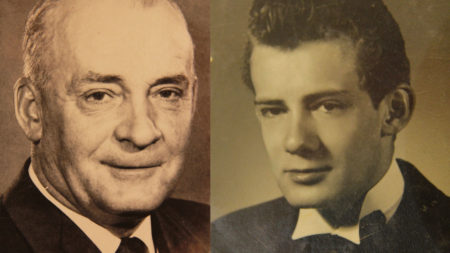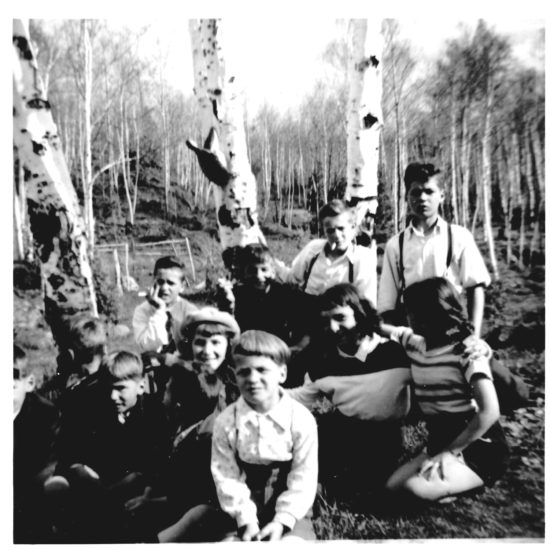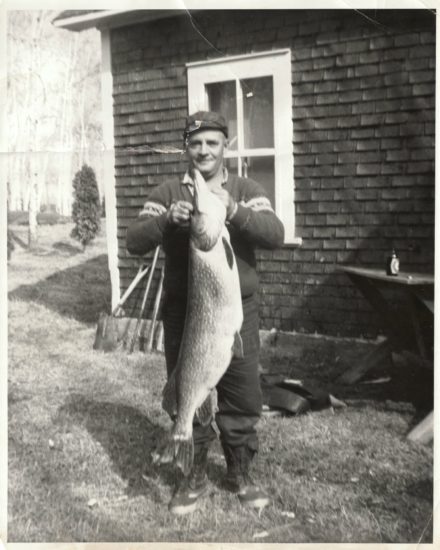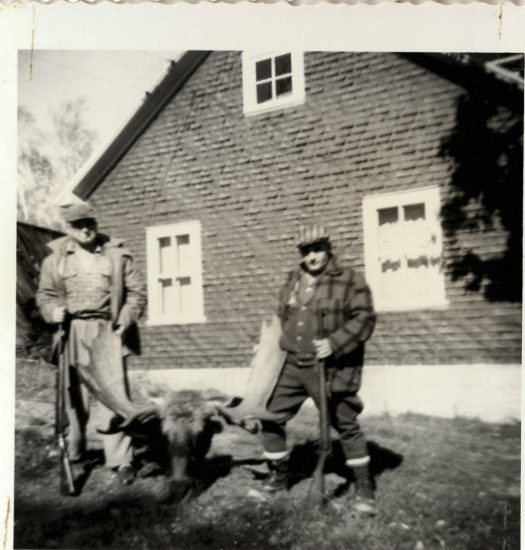The Fascinating Story of the Morel Family

Thomas-Louis Morel (left) and his son, Clément Morel (right), are the second and third generation of Morels to have worked for Alcan. At the time, they lived in a small house right on the site of spillways five and seven of the Petite Décharge River, at the mouth of Lac Saint-Jean.
Seeing the Isle-Maligne Power Station and its large-scale facilities in Alma today, it is hard to imagine all the history and changes that have taken place since it was built in 1926. The history of Power Operations is closely linked to that of the Morel family, since three generations have lived in a small house, provided at the time by the company. This house was right on the site of spillways five and seven of the Petite Décharge River, at the mouth of Lac Saint-Jean.
In 1925, Jean-Baptiste Morel, then an employee of the Quebec Development Company, built the house in the middle of the woods to live in with his family. His son, Thomas-Louis Morel, and his grandson, Clément Morel, would both later work for Alcan and live in that house too. Jean-Baptiste was the site caretaker at the time, but because he spoke English very well, he was also foreman of the major construction site of spillways five and seven, as well as dam six. Thomas-Louis would later succeed him and become operator of the spillways. He would also take charge of the small house and the entire site, which he transformed into a charming location that was much appreciated by the company’s senior leaders.
In this house, we had amenities that the other people living on the range did not have, so in a way we were living ahead of our time,” said Clément Morel, who is now 82 years old. “Because of the dam, we had electricity as well as running water, and we also had a telephone line that was connected directly to the power station. But the road between the house and the range was not maintained in winter, so when we were getting around as a family, we had to travel on horseback. When I was by myself, like in the morning when I had to go to the little schoolhouse, my dog would pull me on the sled all the way there.”

Clément remembers that as a child, he would sometimes open the gate to the private site and house for company leaders who came to spend their summer holidays in a cottage a few kilometres away. He said, “My father would drive them back and then pick them up with a rowboat. I would sometimes go with them and even received a tip once in a while.”
He noted, “The territory was unoccupied, and no one was allowed to come on this land. It was about two kilometres from the house to dam seven. This was a huge natural playground, and I have fond memories of summers spent hunting and fishing. In those days, when the company did major construction work, workers used steam excavators called steam shovels.” With a laugh, he added, “Later, when diesel excavators replaced them, we would call them steam diesel shovels.”
Clément would later work for over 40 years for Alcan, happy and grateful as a drafter/designer at Arvida.
I wanted to work for Alcan because I was familiar with its environment,” he said. “I started as a student when I was 21 years old, doing maintenance work on the dam, including painting. I used to climb to the top of the dam even though I was very scared. Safety awareness was different back then.”
Clément’s son, Martin Morel, also remembers when his grandfather still worked for Alcan. He has memories of how, when it was time to switch off the shovels, the whole family would go to the dam to catch hundreds of fish in the last runoff, which today is prohibited.

Thomas-Louis Morel in front of the family home, showing off one of his impressive catches.
Although the little house no longer exists, Clément Morel said that the foundations are still there in the ground. For him, this place continues to hold many childhood memories, reminiscent of the strong connection between the history of his family and that of Power Operations.
This family’s story reminds us that behind decades of history, countless employees have helped build the facilities that now make up Rio Tinto. What stands before us today is the result of hard work by generations of pioneers who are an essential part of the Rio Tinto family.

Clément Morel still has fond memories of his summers spent hunting and fishing in this vast natural playground where he feels fortunate to have lived.


